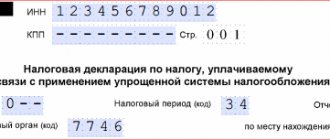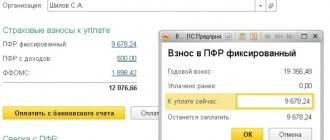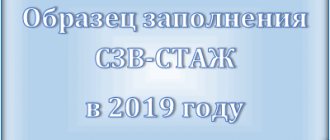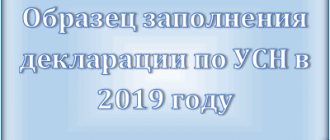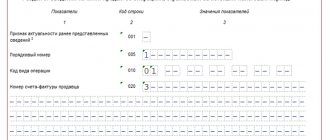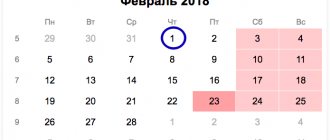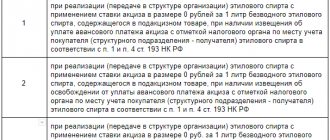VAT are three letters that each of us has definitely heard. Even if you have nothing to do with the business. The abbreviation can be found on any receipt when going to the store. But not everyone knows what it is and why it is everywhere you look. And even if you ask this question, then a simple decoding of the abbreviation - “value added tax” may not say anything at all, except perhaps that this is again some kind of tax. Meanwhile, you need to know this. After all, VAT applies to absolutely everyone, even if you are a simple sales manager or an employee of an enterprise.
The simplest thing you need to know initially is that this tax is imposed on any product and any service that is sold by a company at a price even slightly higher than its cost. In this option, VAT will be calculated based on the difference between the cost of the product and its selling price.
Where does VAT come from?
A hundred years ago (the twenties of the twentieth century), the value added tax replaced the then existing sales tax. Before this, the tax was taken from all revenue. And it was difficult for entrepreneurs, because they had to make constant identical payments, which did not take into account possible income at all. They were based only on bare revenue, not profits. But on the territory of the Russian Federation, VAT was introduced only in 1992.
Until recently, the VAT rate was 18%. Many have gotten used to this figure. So, when it became known that they planned to increase VAT, the public began to be very indignant. Many political scientists and economists criticized the new laws. After all, a 2% increase, which might seem uncritical, would actually lead to an increase in prices for absolutely everything.
However, from January 1, 2021, VAT in Russia officially became 20%.
This rate applies, with some exceptions, to most goods and services. But there are other options. Thus, a rate of 10 percent, for example, is levied on medicines, children's products and some food products. But the product for export (export) is not subject to this tax at all. There the VAT rate is zero.
Rates are regulated by Article 164 of the Tax Code of the Russian Federation.
Who pays VAT
A scheme may be born in the mind of the average person, suggesting that this tax does not concern him at all. Well, the entrepreneur pays himself, and let him pay. But this is a mistaken opinion. Because in reality, the entire amount of this tax is ultimately paid by the buyer himself. To understand why this happens, let’s look at a simple example and see what stages the emerging value added tax goes through.
- One company orders material from another company to make its product from it. She pays for this material. VAT will be applied to this amount of the cost of the material that the company paid.
- Next, this company produces its product from the purchased material, and then decides what the cost of the finished product will be? So that you yourself don’t end up at a loss, and your clients don’t run away from inflated prices? First of all, take the amount of money that was spent on the production of a unit of a new product. The tax amount is also calculated, but is recorded as a “tax credit”.
- Next, the company needs to decide how much the product will cost the end customer. Here the cost of the goods is added up, excise taxes are calculated, the share that after the sale will go to profit is entered, and VAT is added. That is, it will already be included in the price of the product that the consumer will pay upon purchase.
- When a product is sold in a certain quantity, the company sits down to calculate profits. From the money received, 20 percent of the tax that the buyer has already paid is calculated. And this money is spent on tax obligations to pay VAT.
Here is a simple diagram that shows that the price of a product in a store already includes value added tax. And if it were not taken into account, the product would cost less.
VAT calculation
To understand the whole process, let's look at an example again.
We opened a point where jeans will be sold. To sell something, you must first produce or buy it. In our case, we find a company that sells jeans wholesale. And we spend 100 thousand rubles on the purchase of a consignment of goods, where one pair of jeans costs 10 thousand rubles (the jeans turn out to be expensive, but for an example it will do). That is, we purchased 10 units of goods.
These 100 thousand rubles that were spent on goods already included 20 percent VAT. Since the jeans were sold to us by their supplier, who has already included this tax in the price, because he will have to pay it to the state for selling the product above cost. That is, we paid 20 percent of the tax. If it weren’t for him, the batch would cost not 100 thousand rubles, but 80 thousand rubles.
We calculate this amount as an incoming contribution or deduction. And we will need to have evidence that we paid for the jeans with VAT already included. Therefore, it is important to have one of the supporting documents - this is either an invoice, or a check, or an invoice, where the tax amount is indicated separately. That is why on all such documents we can find a line with VAT.
Further, when we ourselves set the price at which we will sell our jeans at retail, we remove this amount of VAT from the price for the product. And the next VAT, which will be levied on our sale, will be calculated from the amount received. That is, we add up our costs for the goods (this will include not only the cost price, but also our other expenses that we incur during the organization of the sale) without VAT and add 20 percent to this amount.
How to calculate VAT from the amount
How to calculate VAT on the amount? It's not difficult: you just need to mathematically calculate the percentage. The calculation is made using the formula:
VAT = NB × Nst / 100,
Where: NB - tax base (that is, the amount without VAT), Nst - VAT rate: 20 percent (until 01/01/2019 - 18) or 10 percent.
ConsultantPlus experts provided examples of VAT calculations for sellers. Get free trial access to the system and proceed to calculations.
VAT calculation formulas
Let us first note that the formulas for calculating taxes are not so simple, especially for a person who is not used to dealing with mathematical equations. Therefore, there is more than one calculator that will calculate VAT or the amount excluding VAT for you. You can find them on the Internet, on specialized sites. You don’t need to learn how to use it, everything is extremely simple - there are a couple of fields for entering the amount and that’s it. For those who want to understand the algorithm for calculating the tax percentage, let’s look at the formulas in more detail.
VAT calculation formula
Let’s take the amount we know and denote it by the letter “X”. To understand how much VAT will be, we use a simple formula:
VAT=X*20/100
That is, if our amount of goods is equal to 100 thousand rubles, then the VAT on it will be equal, based on the formula, to 20,000 rubles. This is how much we paid when purchasing goods from a supplier in order to ensure that he paid his value added tax.
Once again, if we want to buy jeans worth 100,000 rubles, we will either pay 120,000 rubles, because we will also need to include VAT (this is done by the supplier), or we will pay 100,000 rubles with VAT already included, and in fact we will buy smaller quantity of goods.
Because in fact the price will be 83,333 rubles. 33 kopecks, and another 16,666 rubles. 67 kopecks is the VAT price for this amount, which is already included in the invoice for us by the supplier. You can open any VAT calculator on the Internet and check the calculation, but for now we’ll move on to the formula that will show us why it turns out to be 120 thousand.
Formula for calculating the amount including VAT
Amount - X. Amount with tax - Xn. Xn = X+X*20/100 Or Xn=X*(1+20/100)=X*1.20
That is, from our amount of 100,000 rubles, the amount including VAT will be equal to 120,000 rubles. We have already described this above, that is, if we want to buy 10 pairs of jeans, then we will actually have to pay 120 thousand, not 100, because the supplier will include VAT in the invoice.
Formula for calculating the amount excluding VAT
Amount including VAT = HN. You need to understand what the amount X will be equal to - the amount excluding VAT. To understand the formula, let’s remember the second formula, which calculated the amount including tax. And we enter the designation of the tax itself - it will be Y. Y, if the VAT is 20 percent = 20/100. Then the formulas will look like this:
Xn = X+Y*X Or Xn = X*(1+Y) From here we get that X = Xn/ (1+Y) = Xn / (1+0.20) = Xn / 1.20
We want to buy goods worth 100,000 rubles, but so that this figure already includes VAT, and at the same time understand how much the true amount we pay for the goods, and not for the tax, will be. We use the calculation:
Amount without VAT (X in this case) = 100,000 rubles (Xn) / 1.20 = 83,333 rubles with kopecks.
That is, if indeed one pair of jeans costs us 10 thousand rubles without VAT, then by paying only 100,000 rubles we will be able to purchase no more than 8 pairs from the supplier (there will be a little money left). Or, if we nevertheless spent 100,000 rubles and bought exactly 10 pairs, and VAT was already taken into account in this amount, then a pair of jeans costs 10,000 rubles with VAT already included in it. And we still paid it for the supplier (who, in turn, also paid VAT for the supplier of the materials from which these jeans are made).
Online calculator
Allows you to automatically calculate the indicator and obtain accurate data. You can use the VAT calculator on the website page.
+ Accrue
— Select
| Price without VAT: | 0 ₽ |
| VAT 18%: | 0 ₽ |
| Value with VAT: | 0 ₽ |
VAT amount in words:
Calculation from total
To separate VAT from the total price, you can use the following formula:
Total cost x 18 /118, assuming the rate is 18 percent.
Example No. 2: Everest LLC pays the invoice issued to the company for work performed. The total amount to be paid is RUB 25,500. The regular rate of 18% applies to the services indicated in the invoice: 25,500 x 18 / 118 = RUB 3,889. 83 kop.
The calculated amount will be indicated in the tax return.
Tax credit and tax liability
We looked at the formulas, but how much should we pay to the budget for this tax, you ask. Let's finish off the topic with jeans and resolve this issue, and at the same time we will understand such components of the concepts of value added tax as credit and liability.
We still bought jeans for 120,000 rubles. Of which 20 thousand were paid as VAT for the supplier. We have an invoice from this supplier for our batch of jeans, where it is written in black and white that the price of the goods without VAT is 100,000 rubles, the amount of VAT is 20,000 rubles, and the total cost is 120,000 rubles.
Next, we set aside the VAT figure during calculations and remembered it as a tax credit.
A tax credit is the amount by which at the end of the reporting period it will be possible to make a tax deduction from the tax liability - that is, to reduce the amount of tax we pay to the budget. And what we will have to pay to the budget is a tax obligation.
Let's look further at the jeans.
In reality, we will subtract the VAT we have already paid from the amount of 120,000 rubles to form our price. That is, the amount will be the same 100 thousand rubles.
Let's say, having included all other cost and expense factors, and adding the percentage of the desired profit, we received a price of 200,000 rubles. This is exactly how much our jeans will be sold for in our store to the end consumer. And it is from this amount that our tax liability will be deducted - that is, the tax that we must pay to the budget.
From 200 thousand rubles, according to the formula or calculator, it turns out that VAT is equal to 33,333 rubles. This is our tax liability. But! After all, we also have documents that confirm our tax credit of 20,000 rubles (that is, the fact that we have already paid 20 thousand in the form of value added tax). This means that we can subtract 20 thousand already paid from 33 thousand. In total, we will get 13 thousand rubles, which we will pay after selling all 10 pairs of jeans (let’s say this happened in one reporting period).
From 200 thousand rubles, 13,000 went to the budget from us in the form of tax. But we must not forget that our supplier also paid his 13 thousand into the budget, which he received from us when purchasing the jeans initially.
Types of VAT
- 0%
- 10%
- 20% (replaced the rate of 18%)
As mentioned above, there are a number of goods and services that are not subject to this tax. Therefore, we can talk about the existence of a zero rate. These are exports of goods, products of the space niche, niches of gas and oil transportation and some other types of goods. The list of such positions is regulated by Article 164 of the Tax Code of the Russian Federation.
There is also a list of trade names that are subject to a ten percent tax. These are mainly food products - meat, vegetables, dairy products. It also includes children's clothing, children's furniture and more. Again, the list is quite large; it is better to familiarize yourself with it in person in the tax code if this issue interests you.
Well, the rate of 20 percent is the most popular. You can meet her almost everywhere.
Note: since changes in legislation occurred relatively recently (01/01/2019), you can still find outdated data on the Internet, which describes a rate of 18%.
Transactions subject to VAT
- Import of any product
- Any work on the construction of buildings without concluding a contract
- Transfer of services and goods for personal use, the costs of which are not taken into account when calculating tax.
Which processes are not subject to VAT?
- The work of government bodies, which relates to its direct responsibilities.
- The process of purchase and privatization of municipal and state-owned enterprises.
- Investment.
- Sale of land plots.
- Transfer of money to enterprises operating on a non-profit basis.
VAT calculation methods
- Subtraction. In this option, the tax is imposed on the full amount of revenue, and from this amount the VAT payable for the purchase of materials for the product or service is calculated.
- Addition. In this case, VAT is imposed at a fixed rate according to the tax base. It is made up of the added value of each type of product sold.
So, while the second option is difficult to implement, because there are often very many such individual items, the first option is used much more often.
How to calculate VAT
For correct calculation and, accordingly, compliance with the law, the taxpayer must:
- Determining the VAT rate on VAT - the Tax Code will help in this matter, in separate articles of which it is stated which types of goods or services are subject to a particular amount of taxation. Most of them are subject to VAT of 18%, less often 10%, rarely 0%.
- Calculate the amount of the tax base - Article 154 of the Tax Code of the Russian Federation regulates this issue. This amount includes the amount for goods sold plus the cost of excise taxes. The tax base is determined by the date of shipment of the goods or receipt of the full or partial amount of its payment, depending on which of these transactions took place first.
- Calculate the VAT amount by multiplying the tax base by the tax rate.
You can learn more about VAT from this video:
VAT reporting
It seems that it has become a little clearer what value added tax is, where it comes from, how it is calculated and who pays it. However, you still need to report to the FSN authorities for it. Let's figure out how this is done.
The first thing you need to know is that you need to report quarterly. Moreover, the deadline is until the 25th of the post-reporting month. Otherwise, ugly fines await.
Important! If you send a VAT report by mail, then take into account the filing date - this is the date that will be stamped on the letter.
Example: It took 10 days from the post office where you sent a registered letter with your declaration to the tax office itself. Sent on the 18th, arrived on the 28th. Will it be considered that you submitted the report late? The answer is no. After all, the 18th number will appear on the stamp of the letter.
Tax deductions
In the case of value added tax, deductions are considered to be the amount of tax that is presented for payment by the supplier of the goods. The tax that will go to the budget from you will be reduced by this figure.
But there are some nuances that you need to know and understand. This concerns the conditions for the tax authorities to accept these deductions. Three rules must be followed:
- The product itself, which you purchased for the purpose of subsequent sale, is subject to VAT.
- The company has all supporting documents, including a correctly executed invoice.
- The goods that were purchased went through the accounting procedure.
And only after these conditions are met, the company will be able to accept the entire amount of payments as a deduction at the end of the tax period. Naturally, if all procedures were taxable.
Invoice
This document will reflect several amounts. Firstly, the cost of the goods without VAT. Secondly, the final amount includes VAT.
An invoice is provided for the goods sold to the client. This must be done within 5 days. All documentation is filed and noted in the sales book.
It happens that the audit makes a decision to cross out all calculated deductions and charge unpaid VAT. This can happen if there are errors on the invoice. And it’s not so difficult to allow them, because the invoice is issued by the counterparty, not the taxpayer.
Accounting for VAT in business transactions
- An example from life.
for the 2nd quarter of 2021, it sold 10,000,000 worth of products. At the same time, it spent 260,000 rubles on the purchase of goods, including VAT.
- VAT to be charged 10,000,000 * 18% = 1,800,000
- VAT payable 260,000 (0.18/(1+0.18)) = 39,661 rubles
- VAT payable 1,800,000 – 39,661 = 1,760,339 rubles.
Thus, we find that in order to quickly calculate VAT at the end of the month, it is necessary to keep a sales book and a purchase book, where the amount of VAT is clearly recorded.
Bottom line
Knowing what VAT is is important for anyone. Knowing how to calculate it is important for those who are directly involved in filling out documents and submitting reports to the tax department. Being unaccustomed to doing this using formulas is difficult and tedious. Therefore, to check yourself and your counterparties, there are many electronic resources where you can find a VAT calculator that will calculate it for you in two clicks. The main thing is to remember that attentiveness is an important component in the matter of VAT, and you cannot be late in submitting your reports to the tax office.
